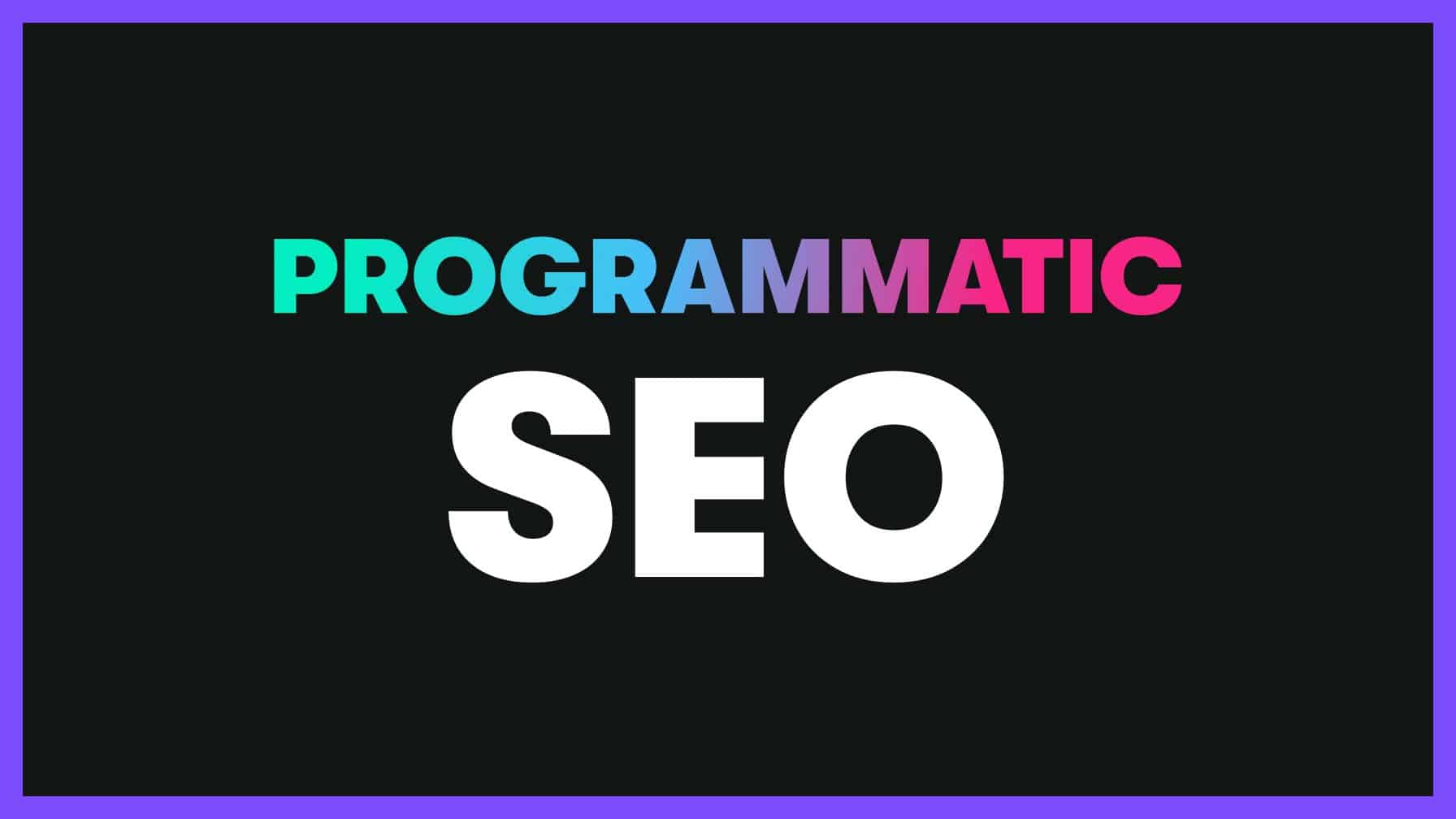
In today’s digital landscape, having a strong online presence is crucial for the success of any business. With the increasing reliance on search engines to find information, it is essential to ensure that your website is easily discoverable and stands out from the competition. This is where programmatic SEO comes into play.
Understanding the Concept of Programmatic SEO
Programmatic SEO is the use of automation, algorithms, and data-driven insights to optimize and improve a website’s performance in search engine results. Unlike traditional SEO techniques, which rely heavily on manual interventions and are limited by human capabilities, programmatic SEO leverages technology to maximize efficiency and effectiveness.
Defining Programmatic SEO
Programmatic SEO refers to the systematic and strategic approach of using advanced algorithms and machine learning to automate the optimization of website content, structure, and technical aspects in order to improve search engine rankings. It involves analyzing vast amounts of data and making data-driven decisions to continuously enhance a website’s performance.
The Importance of Programmatic SEO in Today’s Digital Landscape
In the highly competitive online marketplace, being visible to potential customers is crucial. Programmatic SEO helps businesses increase their website’s visibility in search engine results, leading to higher organic traffic and better brand exposure. By automating and optimizing various aspects of SEO, programmatic SEO allows businesses to stay ahead of the competition and make their mark in the digital world.
Furthermore, programmatic SEO offers businesses the opportunity to gain valuable insights into their target audience’s behavior and preferences. By analyzing data on user interactions, search patterns, and demographic information, businesses can tailor their content and marketing strategies to better meet the needs and expectations of their customers.
Moreover, programmatic SEO enables businesses to adapt quickly to changes in search engine algorithms and industry trends. With the ever-evolving nature of search engine optimization, staying up-to-date with the latest best practices can be challenging. However, by leveraging programmatic SEO tools and technologies, businesses can automate the process of monitoring and adjusting their SEO strategies, ensuring that they remain relevant and effective.
The Role of Programmatic SEO in Website Performance
A well-optimized website is not only easily discoverable, but also provides a great user experience. Programmatic SEO plays a crucial role in enhancing both these aspects.
When it comes to website visibility, programmatic SEO is a game-changer. It goes beyond the traditional SEO practices by using data-driven insights to optimize your website’s performance. By analyzing user search patterns and behavior, programmatic SEO helps identify relevant keywords and phrases that can be incorporated into your website’s content and meta tags, thereby improving its visibility and reach. This means that your website has a higher chance of appearing on the first page of search engine results, making it more likely for potential customers to find you.
How Programmatic SEO Enhances Website Visibility
Programmatic SEO employs advanced algorithms and machine learning techniques to continuously analyze and adapt to changing search engine algorithms. This ensures that your website stays up-to-date with the latest SEO best practices, giving it a competitive edge in the digital landscape. By leveraging programmatic SEO, you can stay ahead of the curve and maintain a strong online presence.
But programmatic SEO doesn’t stop at improving visibility; it also focuses on enhancing the user experience. After all, what good is a highly visible website if visitors don’t stay and engage with your content?
Improving User Experience with Programmatic SEO
User experience is a key factor in determining the success of a website. With programmatic SEO, you can identify and address issues that may impact the user experience. By analyzing user behavior data, programmatic SEO can optimize website loading speed, improve navigation, and enhance mobile responsiveness, resulting in a seamless and enjoyable experience for website visitors.
Imagine a website that loads quickly, has intuitive navigation, and adapts seamlessly to different devices. This is the kind of user experience that programmatic SEO strives to achieve. By understanding how users interact with your website, programmatic SEO can make data-driven recommendations to improve the overall user experience. From optimizing the placement of call-to-action buttons to refining the layout for better readability, programmatic SEO takes a holistic approach to ensure that every aspect of your website is designed with the user in mind.
In conclusion, programmatic SEO is not just about improving visibility; it is about creating a website that is user-friendly, engaging, and optimized for success. By leveraging data-driven insights and advanced techniques, programmatic SEO can help your website perform at its best, attracting more visitors and keeping them coming back for more.
The Mechanics of Programmatic SEO
Programmatic SEO operates at the intersection of search engine optimization and programming. It involves the meticulous implementation of carefully curated strategies and tactics to achieve desired outcomes.
The Intersection of SEO and Programming
Traditionally, SEO and programming have been treated as separate disciplines. However, programmatic SEO bridges the gap between the two by combining technical expertise with data-driven insights. It involves using programming techniques to optimize website elements, such as meta tags, schema markup, and URL structures, in order to improve search engine rankings.
The Process of Implementing Programmatic SEO
The implementation of programmatic SEO involves several steps. Firstly, a comprehensive website audit is conducted to identify areas of improvement. This includes analyzing website structure, content, and technical aspects. Based on the audit findings, a customized programmatic SEO strategy is developed, which encompasses keyword research, content optimization, technical improvements, and ongoing monitoring and adjustments.
One key aspect of programmatic SEO is the utilization of structured data. By implementing schema markup, websites can provide search engines with additional information about their content. This allows search engines to better understand and categorize the website’s information, resulting in improved visibility in search results. For example, a website selling products can use schema markup to provide details such as price, availability, and reviews directly in the search engine results page, making it more enticing for potential customers.
In addition to structured data, programmatic SEO also focuses on optimizing website speed and performance. Studies have shown that users are more likely to abandon a website if it takes too long to load. Therefore, programmatic SEO involves optimizing code, compressing images, and leveraging caching techniques to ensure that websites load quickly and efficiently. This not only improves user experience but also signals to search engines that the website is well-maintained and user-friendly, resulting in higher search engine rankings.
Measuring the Impact of Programmatic SEO
Measuring the success of programmatic SEO is essential to gauge its effectiveness and identify areas for improvement. It involves tracking key performance indicators (KPIs) and interpreting the results to make data-driven decisions.
But what are the specific KPIs that you should be monitoring? Let’s dive deeper into the world of programmatic SEO and explore some of the important metrics that can help you evaluate the impact of your strategies.
Key Performance Indicators for Programmatic SEO
When it comes to programmatic SEO, there are several KPIs that deserve your attention. One of the most crucial metrics is organic traffic, which measures the number of visitors who find your website through search engine results. By monitoring organic traffic, you can determine whether your programmatic SEO efforts are attracting the right audience and driving relevant traffic to your site.
Another important KPI is search engine rankings. By tracking your website’s position in search engine results pages (SERPs), you can assess the effectiveness of your programmatic SEO strategies. Higher rankings indicate that your website is more visible to potential visitors, increasing the likelihood of attracting organic traffic.
Bounce rate is yet another metric that plays a significant role in measuring programmatic SEO success. It measures the percentage of visitors who leave your website after viewing only one page. A high bounce rate may indicate that your website is not meeting visitors’ expectations or that your content is not engaging enough. By analyzing bounce rate, you can identify areas for improvement and optimize your website to encourage visitors to explore further.
Conversion rate is another key metric to consider. It measures the percentage of visitors who take a desired action on your website, such as making a purchase or filling out a contact form. By tracking conversion rate, you can assess the effectiveness of your programmatic SEO in driving valuable actions and achieving your business goals.
Lastly, average time on page is a metric that can provide valuable insights into user engagement. It measures the average amount of time visitors spend on a specific page of your website. A longer average time on page suggests that visitors find your content valuable and engaging, which can contribute to better search engine rankings and increased conversions.
Interpreting Programmatic SEO Results
Interpreting programmatic SEO results requires a careful analysis of the data gathered. By identifying patterns and trends, you can gain valuable insights into user preferences, search engine algorithms, and content performance.
For example, if you notice a significant increase in organic traffic after implementing specific programmatic SEO strategies, you can infer that those strategies are effective in attracting the right audience. On the other hand, if you observe a high bounce rate on certain pages, it may indicate that further optimization is needed to improve user experience and engagement.
By continuously monitoring and interpreting programmatic SEO results, you can make informed decisions and optimize your strategies to achieve even better outcomes. Remember, programmatic SEO is an ongoing process, and staying vigilant in analyzing the data will help you stay ahead of the competition and drive meaningful results.
Future Trends in Programmatic SEO
As technology continues to evolve, programmatic SEO is expected to undergo significant changes. The future of programmatic SEO holds great promise for businesses looking to enhance their online presence and boost website performance.
The Evolution of Programmatic SEO
Programmatic SEO will continue to evolve as search engines become more sophisticated and user behavior patterns change. With advancements in artificial intelligence and machine learning, programmatic SEO will be able to deliver increasingly personalized and relevant search results, further enhancing the user experience.
Predictions for Programmatic SEO in the Coming Years
In the coming years, programmatic SEO is expected to become an integral part of every digital marketing strategy. It will become more accessible and affordable for businesses of all sizes. Additionally, programmatic SEO will expand beyond traditional search engines to other platforms, such as voice search and social media, as technology continues to advance.
In conclusion, programmatic SEO has the power to significantly boost your website’s performance. By leveraging automation, algorithms, and data-driven insights, programmatic SEO enhances website visibility, improves user experience, and drives organic traffic. As technology continues to advance, programmatic SEO will continue to evolve and play a crucial role in helping businesses stand out in the digital landscape.
